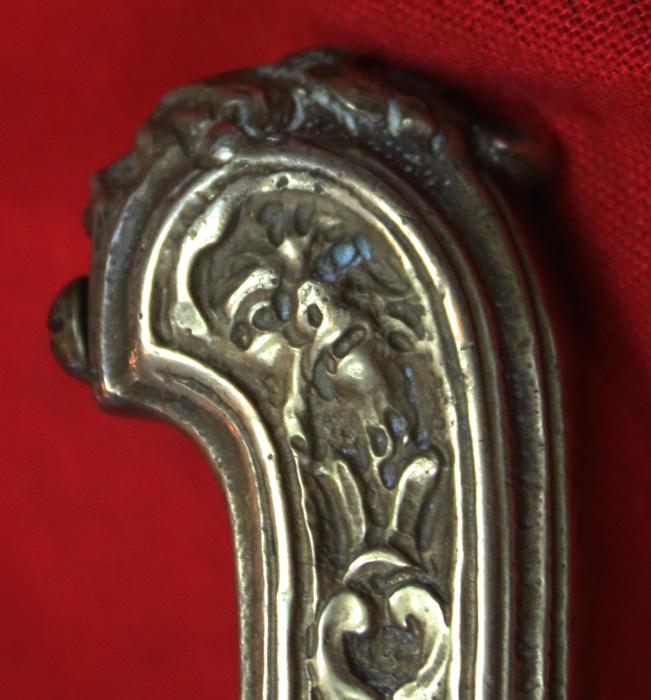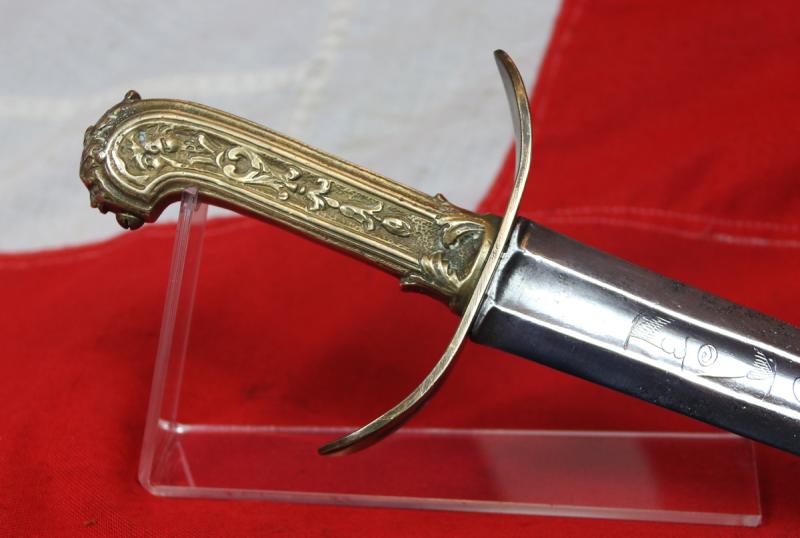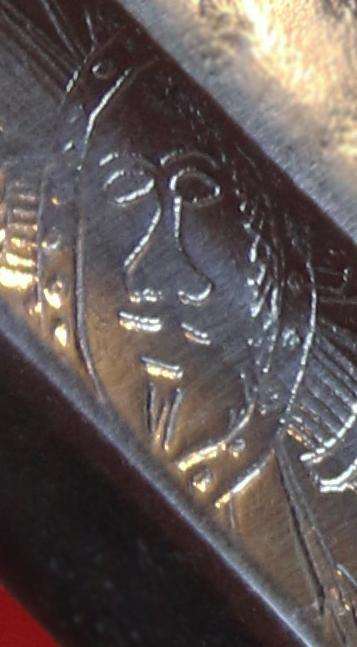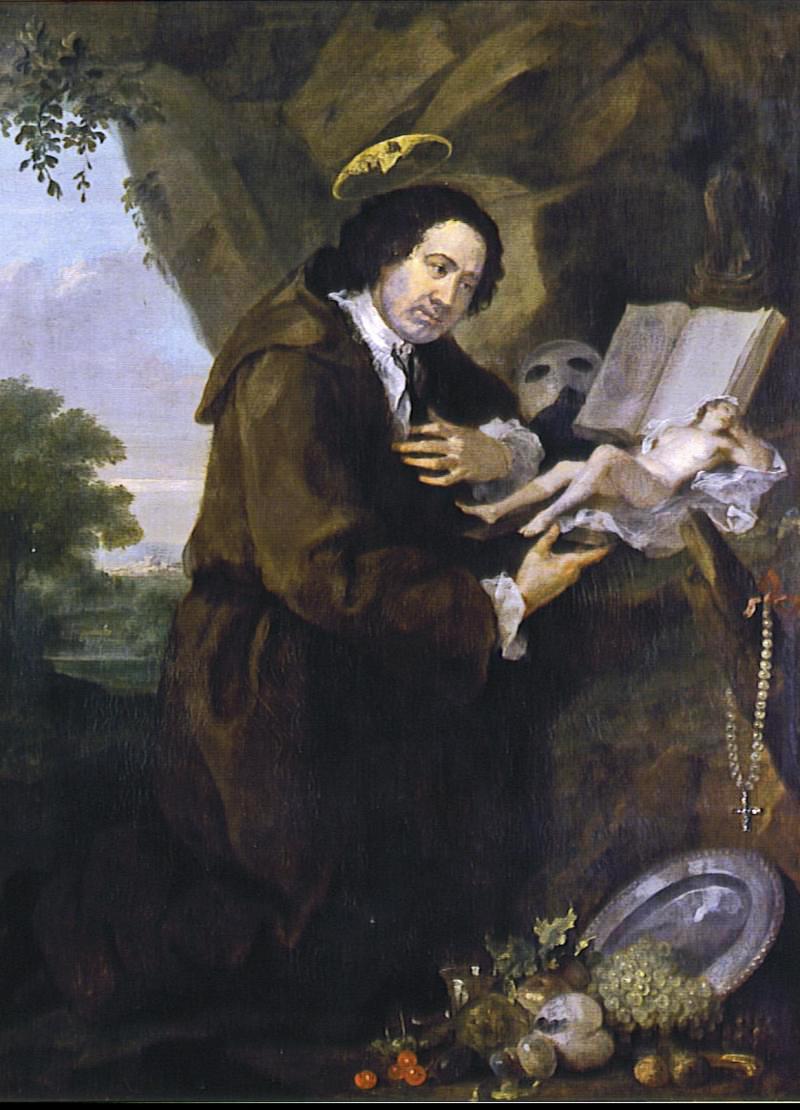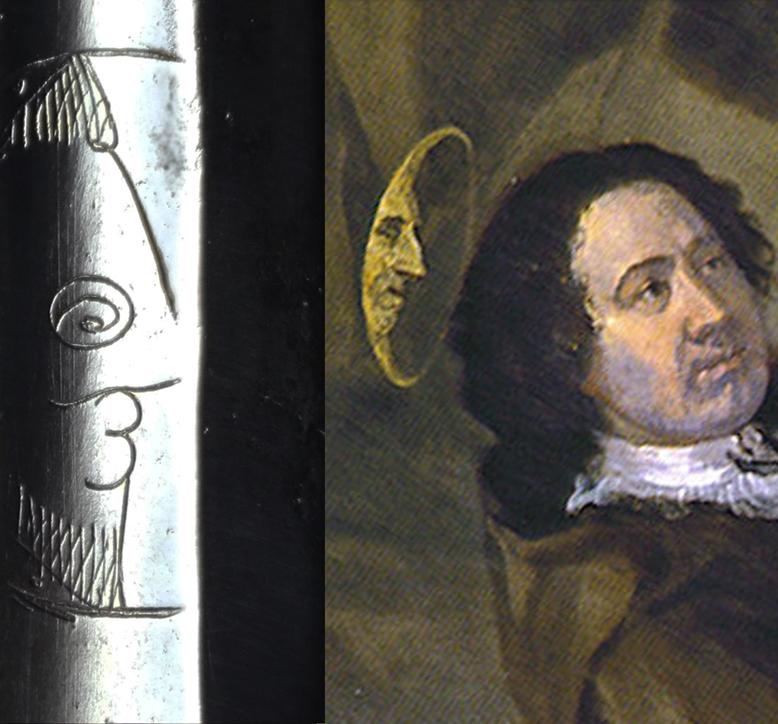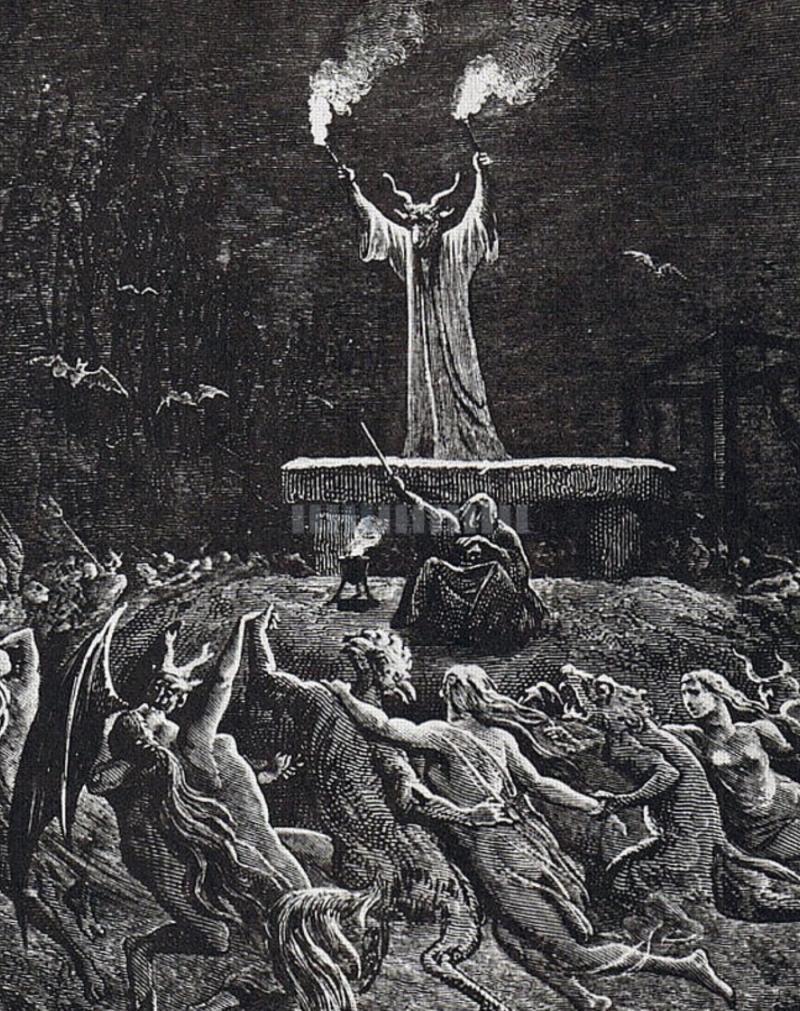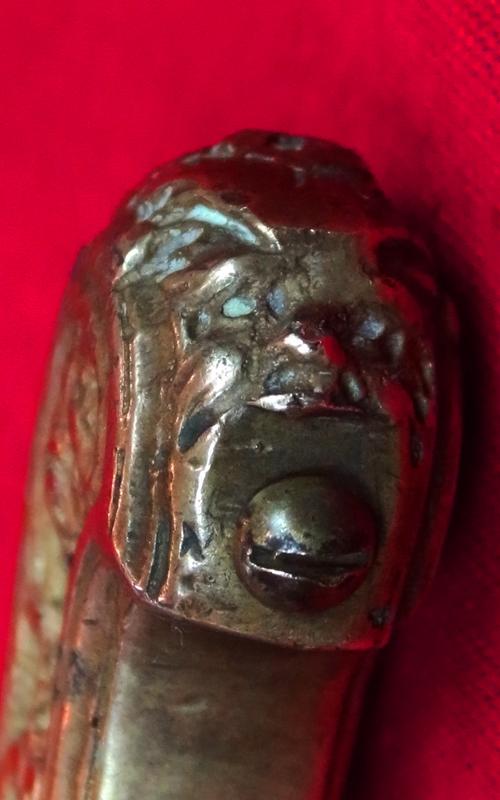A Most Unusual Georgian Period ‘Secret Society’ Cruciform Stylised Ritual Dagger With an Early 18th Century Mystical Symbol Blade, And Demonic Beast Hilt. Made For Such As Sir Francis Dashwood’s Hellfire Club
It was an academic from Harvard who visited us very recently, who identified this, our fine yet intriguing dagger, as to be near identical to a very similar example, formerly the property of Evan Morgan 2nd Viscount Tregedar, about which he had researched some time ago, for the owner of a select, reserve collection, acquired from a former renowned American esoteric art collector. We were initially somewhat puzzled as to its purpose, and we were most intrigued to be informed as to its use, and thus his expert opinion sincerely awakened our interest.
It is a heavy, fine quality, ritualistic dagger, bearing a wide double edged blade, likely made from a shortened, early knightly type broadsword. Beautifully mystically engraved, with a similarity on on both sides of the blade, with a crescent moon bearing a face possibly of Lord Sandwich a great friend of Sir Francis Dashwood, a stand of arms on one side of the blade with a central drum, another stand of arms engraved on the other side but with a shield bearing another face. there is a sun with rays on both sides, also engraved with faces, the engravings are topped with a small star on both sides. The crescent moon faces on the blade are very similar to the face of Lord Sandwich, that is featured in crescent moon halo in the painting of Francis Dashwood by Hogarth.
It has a cast bronze polished pistol-grip style hilt, decorated with relief rococo swags beneath a relief face of a demonic type beast on both sides, upon the offset pommel, each surmounted with the demons face, with its mouth open, the pommel also bears a grotesque face. It is terminated with a most unusual form of downswept, inverted cruciform quillon cross guard.
We were instructed that the mystical symbology engraved to the blade, and the demonic hilt concludes that this fine piece was designed for the ritualistic purposes of such as an 18th century Secret Society would use, of the ilk of the notorious ‘Hellfire Club’, in the use of a secret ceremony by its members.
Pictures 7 and 8 in our gallery show a portrait of Francis Dashwood by William Hogarth from the late 1750s, parodying Renaissance images of Francis of Assisi. The Bible has been replaced by a copy of the erotic novel Elegantiae Latini sermonis, and the profile of Dashwood's friend Lord Sandwich peers from the halo.
The Hellfire Club was a name for several exclusive clubs for high-society rakes established in Britain and Ireland in the 18th century. The name most commonly refers to Francis Dashwood's Order of the Friars of St. Francis of Wycombe. Such clubs, rumour had it, served as the meeting places of "persons of quality" who wished to take part in what were socially perceived as immoral acts, and the members were often involved in politics. Neither the activities nor membership of the clubs are easy to ascertain. The clubs allegedly had distant ties to an elite society known only as "The Order of the Second Circle".
The first official Hellfire Club was founded in London in 1718, by Philip, Duke of Wharton and a handful of other high-society friends. The most notorious club associated with the name was established in England by Francis Dashwood, and met irregularly from around 1749 to around 1760, and possibly up until 1766. In its later years the Hellfire was closely associated with Brooks's, established in 1764. Other groups using the name "Hellfire Club" were set up throughout the 18th century. Most of these clubs arose in Ireland after Wharton's had been dissolved
Sir Francis Dashwood, on moving into Medmenham Abbey, had numerous expensive works done on the building. It was rebuilt by the architect Nicholas Revett in the style of the 18th-century Gothic revival. At this time, the motto Fais ce que tu voudras was placed above a doorway in stained glass. It is thought that William Hogarth may have executed murals for this building; none, however, survive. Eventually, the meetings were moved out of the abbey into a series of tunnels and caves in West Wycombe Hill. They were decorated again with mythological themes, phallic symbols and other items of a sexual nature.
Records indicate that the members performed "obscene parodies of religious rites" according to one source. According to Horace Walpole, the members' "practice was rigorously pagan: Bacchus and Venus were the deities to whom they almost publicly sacrificed; and the nymphs and the hogsheads that were laid in against the festivals of this new church, sufficiently informed the neighbourhood of the complexion of those hermits." Dashwood's garden at West Wycombe contained numerous statues and shrines to different gods; Daphne and Flora, Priapus and the previously mentioned Venus and Dionysus.
A Parish history from 1925 stated that members included "Frederick, Prince of Wales, the Duke of Queensberry, the Earl of Bute, Lord Melcombe, Sir William Stanhope, K.B, Sir John Dashwood-King, bart., Sir Francis Delaval, K.B., Sir John Vanluttan, kt., Henry Vansittart, afterwards Governor of Bengal, (and Paul Whitchead the poet". Meetings occurred twice a month, with an AGM lasting a week or more in June or September. The members addressed each other as "Brothers" and the leader, which changed regularly, as "Abbot". During meetings members supposedly wore ritual clothing: white trousers, jacket and cap, while the "Abbot" wore a red ensemble of the same style. Legends of Black Masses and Satan or demon worship have subsequently become attached to the club, beginning in the late Nineteenth Century. Rumours saw female "guests" (a euphemism for prostitutes) referred to as "Nuns". Dashwood's Club meetings often included mock rituals, items of a pornographic nature, much drinking, wenching and banqueting.
14 inches long overall, blade 9.5 inches long, 1.5 inches wide at the forte.
Code: 20870




